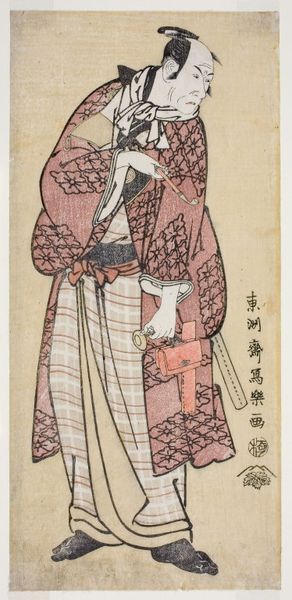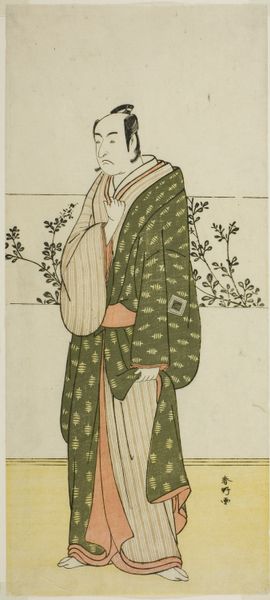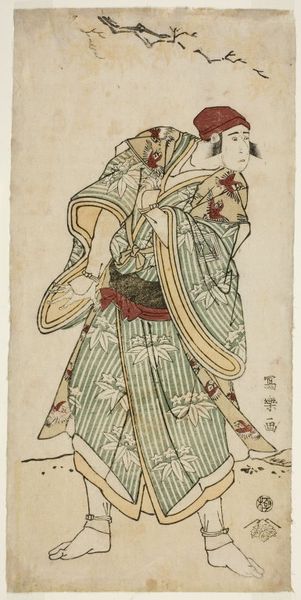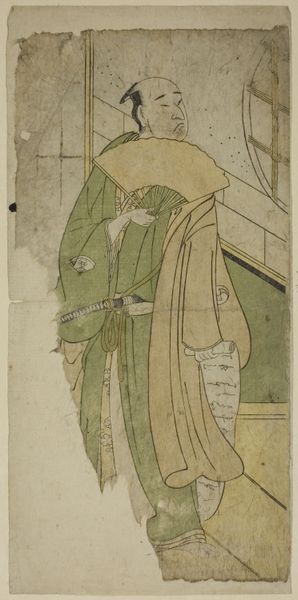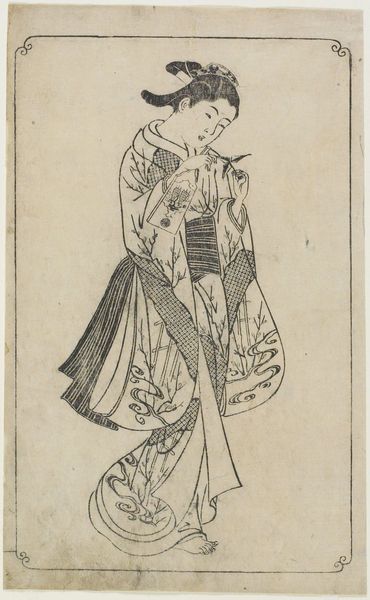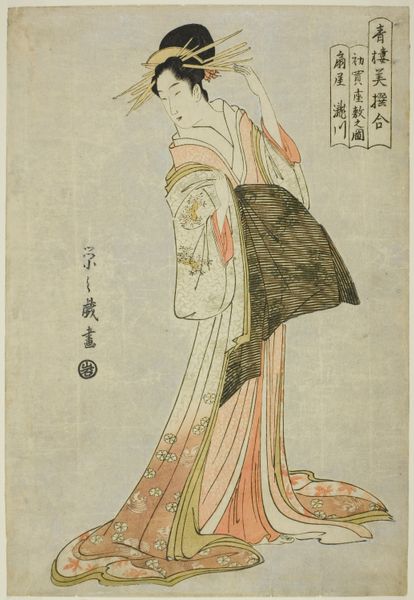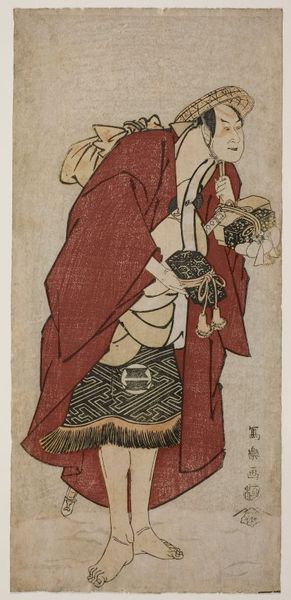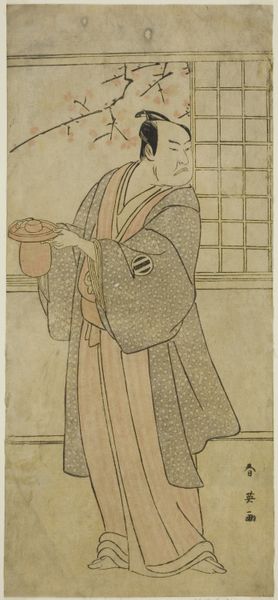
print, woodblock-print, engraving
#
portrait
# print
#
pattern
#
asian-art
#
ukiyo-e
#
figuration
#
woodblock-print
#
engraving
Copyright: Public domain
Tōshūsai Sharaku's woodblock print shows Kabuki actor Iwai Kumesaburō I as the geisha Kumekichi. It was created in Japan during the Edo period, when Kabuki theatre flourished as a popular entertainment. Kabuki was more than just entertainment, it was also a cultural institution, deeply embedded in the social fabric of the time. This print engages with the politics of representation. It depicts a male actor playing a female role, a common practice in Kabuki due to restrictions on women performing on stage. This convention allowed for exploration of gender and identity, challenging social norms through theatrical performance. The image creates meaning through visual codes of Edo society. The actor's elaborate costume, hairstyle, and make-up all signal his character's profession and social status. The cherry blossoms in the background reference the fleeting beauty of life. To understand this artwork more fully, historians explore playbills, theatre reviews, and social commentaries. Ultimately, Sharaku’s print encapsulates the dynamic interplay between art, performance, and society.
Comments
No comments
Be the first to comment and join the conversation on the ultimate creative platform.



